CPM Fluctuations: Where Do They Come From & What to DoCPM Fluctuations: Where Do They Come From & What to Do
Being a publisher is not a simple task. But obviously, having a monetization model that does all the hard work for you, is a lot better. For one, you can get a passive income by simply displaying an ad on your website. Luckily this model is possible for publishers all around the world thanks to the CPM pricing model.
Using it, publishers get paid for every 1000 impressions – Cost Per Mile (thousand in Latin – CPM). So for every 1000 views of an ad displayed on your website, you get paid. In other words, as long as users keep viewing that specific ad, you continue to profit.
Why publishers choose to work with the CPM model
That’s easy – users don’t even need to engage with the ad, in order for the publisher to get paid. But of course, that’s not the only reason why you’d want to choose CPM instead of any other pricing model.
#PropellerAds, #TrafficMonetization
Still wondering why publishers chose CPM? Here are some more reasons:
- It helps you understand if the quality of your traffic is good or not – your profit will increase if you have good quality traffic
- CPM can guide your SEO efforts – When you start monetizing traffic you can check through your cabinet, which countries/ devices/ operating systems, etc., are highly paid by advertisers. Knowing this, you can invest effort and money on the best-performing slices of traffic.
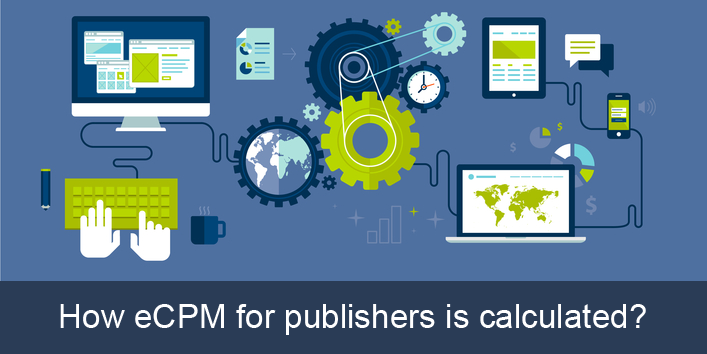
Find out everything about how PropellerAds pays their publishers
11 Common reasons for CPM Fluctuations and What to do about them
You might notice from time to time that the volume of impressions that you’re getting is not always the same. And that’s perfectly normal. You’ll agree with us, once you’ll see what causes your CPM to fluctuate.
But worry not, we’ve got solutions as well. So buckle up and get ready to be enlightened with CPM fluctuation knowledge.
#1. You started targeting a different kind of traffic – Anti-AdBlock
If you just started targeting Anti-AdBlock Traffic you need to consider that advertisers tend to pay less for users that have Anti-AdBlockers thus lowering your overall CPM rate. This is just a result of the Anti-AdBlock bypass solution being seen as an extra way to monetize all the traffic you’ve got.
People start from the belief that users weren’t interested in receiving ads, so their engagement rate might be lower compared to that of the rest of the users. However, tests showed us that this traffic can be just as reactive. And even if you might notice a slight drop in the overall CPM that advertisers are paying you, at the end of the day the money keeps on adding on.
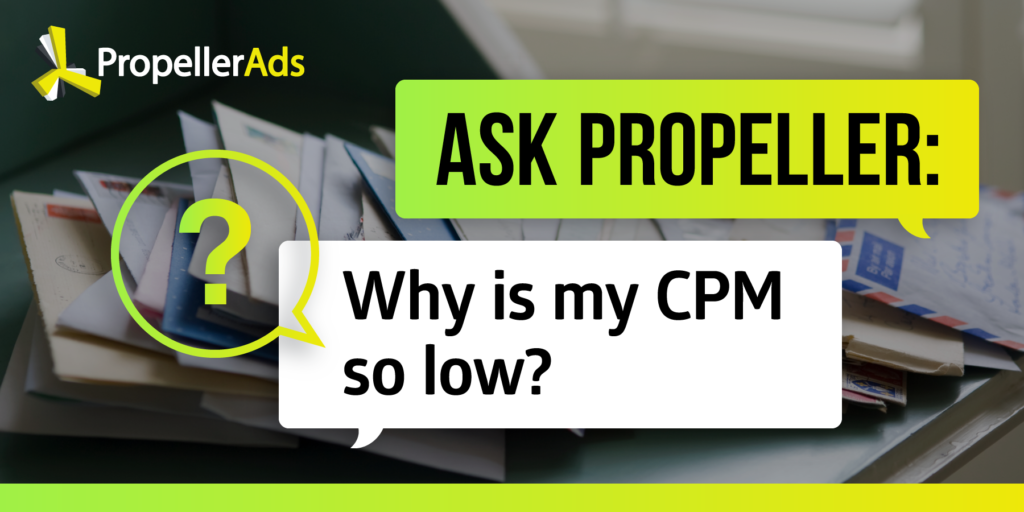
Is your CPM too low? Here’s what our expert thinks
The lower CPM is mostly due to the lower volume of Anti-AdBlock traffic, compared to the regular traffic. So when you will check your cabinet, you will notice a lower CPM, but a higher profit than without it, although this isn’t always the case.
Here you can see an example of how one of our publishers actually managed to increase his CPM by monetizing Anti-AdBlock traffic:

The statistics in the first table from above show his CPM for regular site traffic, while those from the table below show his CPM once he started monetizing Anti-AdBlock traffic. Sure he didn’t get such a high profit with Anti-AdBlock, but it helped boost his CPM rate aside from adding something to his profit.
Even though the CPM might not always increase, the profit remains. And it comes from adding almost 10% of your regular profit. All just by using one extra code on the website – the Anti-AdBlock bypass solution. That’s why many publishers choose to monetize Anti-AdBlock traffic in the first place.

#2. Your ad frequency is working against you
No! More ads don’t mean better payout. If you expose your users to ads that appear too often they will most likely perceive them as spamming or suffocating. Your users will end up being immune to these ads, ignoring them just like any other piece of information that’s not interesting. And your CPM will drop.
Alternatively, if your ad frequency is too low, they might never get to see your ads. So make sure to do your homework. Look into what the optimal frequency for your traffic is, for instance. Whether it’s high or low, adapt and amend accordingly. If not, your passive income risks turning into a passive waste of time and money.
For example, we noticed that an optimal ad frequency for OnClick Popunders is 3 every 6 hours. However, if you decide to lower it to 1 per 6 hours you might risk your users not seeing your ad, or even closing it without any impression. In this case, the advertisers won’t invest in your traffic and your CPM will drop.
#3. The placement of the ads can be counterproductive
There are two things that you need to consider when it comes to placement. The first is the page where the ads are being displayed. If you don’t really get a lot of traffic there, obviously no one can see those ads and your CPM will drop. So make sure to run some analytic tools to identify the pages where you have the most visitors, that is if you want to have a good CPM.
For example: If you only place Popunders on a page where users don’t stay too long to get ads (like on a live-streaming website’s homepage) they will never get to see your ads. No ad view = no reactions on ads = advertisers pay less to advertise on your website = low CPM = even less advertisers choose to invest in your traffic.
Secondly, the placement of your ads on the page might not be the best. Use Heat Maps – they will help you identify the exact position that draws most of the views, or the place with the most user activity. This way, you can move your ads on the page, and improve your CPM.
In addition, if you contact your personal Account Manager or our support team, they can also advise which might be the best placement for your ads.
#4. Completely unexpected situations might come up
We’ve just witnessed the first-ever pandemic in over 100 years, and all of us saw the devastating effects it had on some verticals (like travel for example). These are the situations that you simply can’t prepare for. But it’s not the end of the world.
In fact, the pandemic managed to help boost the CPM of many websites. Especially the ones posting social news about COVID-19. Check out how the CPM of one of our publishers increased during the first months of the pandemic:
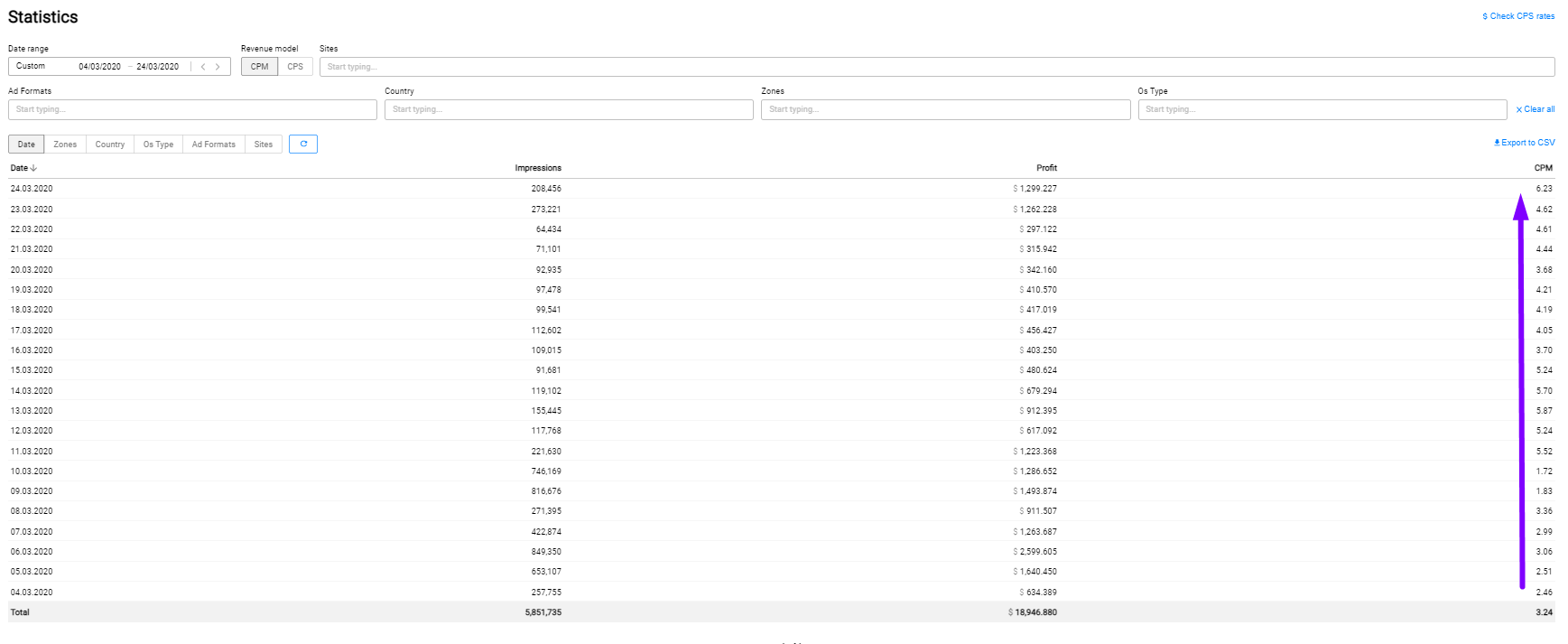
CPM went from $2.46 to $6.23 in only 20 days in the month of March 2020, when the first news regarding the pandemic started to be published.
But keep in mind that the opposite happened with all the webmasters that didn’t post anything on sport streaming websites because of all the canceled events. Or the ones that didn’t update their social news websites during these times. And instead of an increase, their CPM took a hit.
Even when the worst seems to come, all you need to do is take a deep breath and think up a fast crisis recovery plan. If you’re completely out of ideas, our Publisher Partnership Managers are here to help. So don’t hesitate to get in touch. And there’s also a silver lining to every new challenge: it will allow you to grow and learn a lot of new things.

#5. Unexpected Technical SEO Challenges
When you’re in the business of monetizing website traffic, there are a series of timely checks that you must do. Otherwise, you might suddenly realize a drop in the volume of users that are viewing ads which will impact your CPM rate causing it to drop. So here are the most common SEO changes that can make your traffic plunge, if you’re not taking measures against them:
- You’re on Google’s abusive notification list for displaying malicious content – check the abusive notification report, remove all the malicious content and request a new evaluation from the Google Search Console (GSC).
- You might’ve gotten a manual penalty from Google – read the GSC Manual Actions, from the Search Traffic menu. Be careful to only analyze your organic traffic, and if there are any penalties, remove any problem specified in the GSC Manual Actions message(s).
- Your website’s loading speed has changed – verify your website’s speed in the Google PageLoad Insights
- Changes in the Google Algorithm – often these lead to traffic loss and your CPM getting lower, and the worst: they don’t even announce these updates. In which case, you need to make sure to timely diagnose your traffic.
If Google is blocking the ads on your website, you will end up getting less impressions and conversions of ads. Hence, your rates and revenue will likely drop. Moreover, any of the above reasons will lead to your website getting less Organic Traffic. Luckily for you, that doesn’t need to stay this way 👇👇.
#6. Other Technical Challenges
Your CPM can also fluctuate if you’re using the same tag everywhere, or messing up the ad script altogether. This is a pretty rookie mistake, however, it can also happen to more experienced users.
If you’re concerned that this might be the reason why you’re stuck in the limbo of missing out on traffic, check out this guide. Alternatively, get in touch with your Publisher Partnership Manager.
#7. Your content needs a revamp or a change
This can happen for a series of reasons. Maybe you changed your content and it no longer matches your traffic expectations.
For instance: You’re posting game plays, but suddenly you changed to vegan recipes – a CPM drop can be expected. People are coming to your website for gameplays, and chances are very few (if not none) will stay for these recipes.
Obviously, if your traffic volumes are decreasing, your CPM will drop, and with no traffic advertisers don’t have what to buy from you, causing an even bigger CPM drop.

Make sure that you’ve got trending and viral content
The same can happen if you don’t update your content. In fact, we have seen this happen countless times with content on-demand platforms or news websites. When a new show or breaking news comes up, your traffic expects to see it on your platform.
If you don’t deliver, the traffic will go elsewhere, your CPM drops, and you will lose money.
Of course, the complete opposite can also happen. If you post something really good and go viral, your CPM will increase as advertisers will have more traffic to purchase from you. When the news becomes old and if you can’t replicate the same success, you might return to your previous volumes, and see a drop in your CPM.
Check out the CPM breakthrough of this publisher when he managed to be the only one to post a new episode of a popular show:

#8. Your site category is affected by the season or trends
Based on our research, there is a trend of CPM drop for streaming websites during the summer months. We also noticed a hike during the Xmas holiday season, or sporting events (for sports sites, and not only).
We saw the same important increase for social/news websites during major global events – pandemic, lockdown, or any other worldwide impacting news.
In this case, updating your content and keeping up with what the people are looking for, is essential. If you miss out on these opportunities, it is natural for your CPM to fluctuate. Especially if you have a too niche website, and don’t deliver the thematic content in time.
Take this website for example. We have the 3-month results of one of our publishers, including the period right before the EURO (Img. 1) and the results from before the EURO championship in the next image (Img. 2):
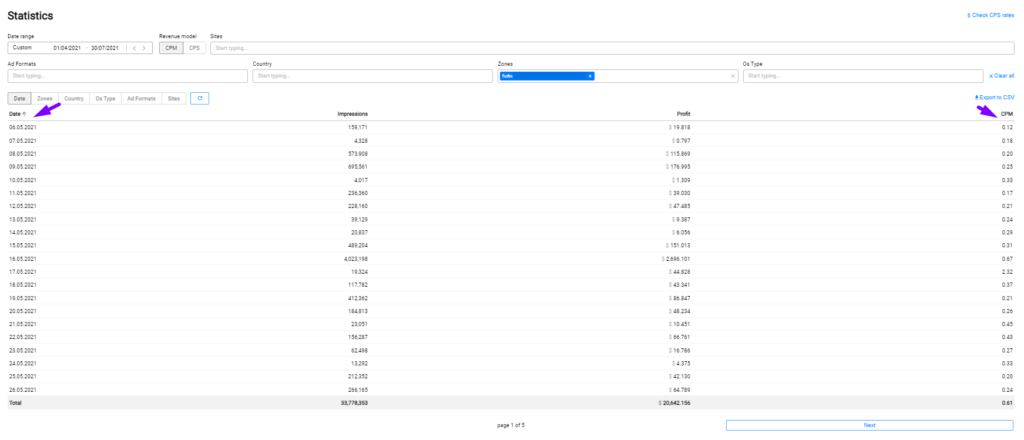

This publisher managed to double his performance (impressions and profit) from a regular month, in the month before the EURO. In fact he got more than the average of impressions and profit he would normally get during 2 normal months – $16,920, and $10,916 respectively. He also increased his monthly CPM to 0.65 compared with that of the average of the past 3 months – 0.61.

Not sure what to do? Follow the trends
#9. The traffic quality and types can also cause CPM fluctuations
As you could expect, poor quality traffic will cause your CPM rate to drop. So make sure to check your user interaction on your website, or the bounce rate. It will tell you how many pages your users visit, or what actions they take. Knowing this will help you identify the problems that need fixing.
In addition, if your traffic suddenly changes, your CPM will react. For example, if you used to have a lot of Android traffic, but now you’re getting more iOS users, this will show in your CPM. In fact, iOS users are some of the most well-paid for traffic, and your CPM rate is likely to increase.
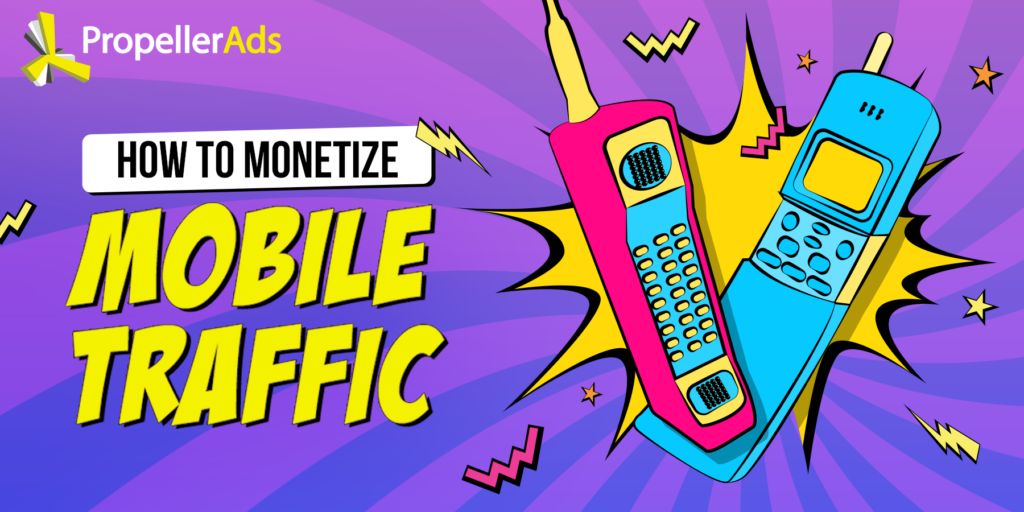
Read about everything you need to start monetizing mobile traffic
#10. The traffic GEO can also cause changes in your profit
Much like the traffic type, the GEOs have different CPM rates. And if your traffic is mostly coming from low-paying GEOs, this will lead to a lower CPM rate. You can monitor these changes during your ads testing period. Just don’t forget to continue checking for future changes.
However, you should keep in mind that while Tier 3 countries can bring higher volumes, their CPM will likely be lower. And at the same time, Tier 1 countries can bring lower volumes but will pay better CPM.
Here is a very interesting case from one of our publishers:
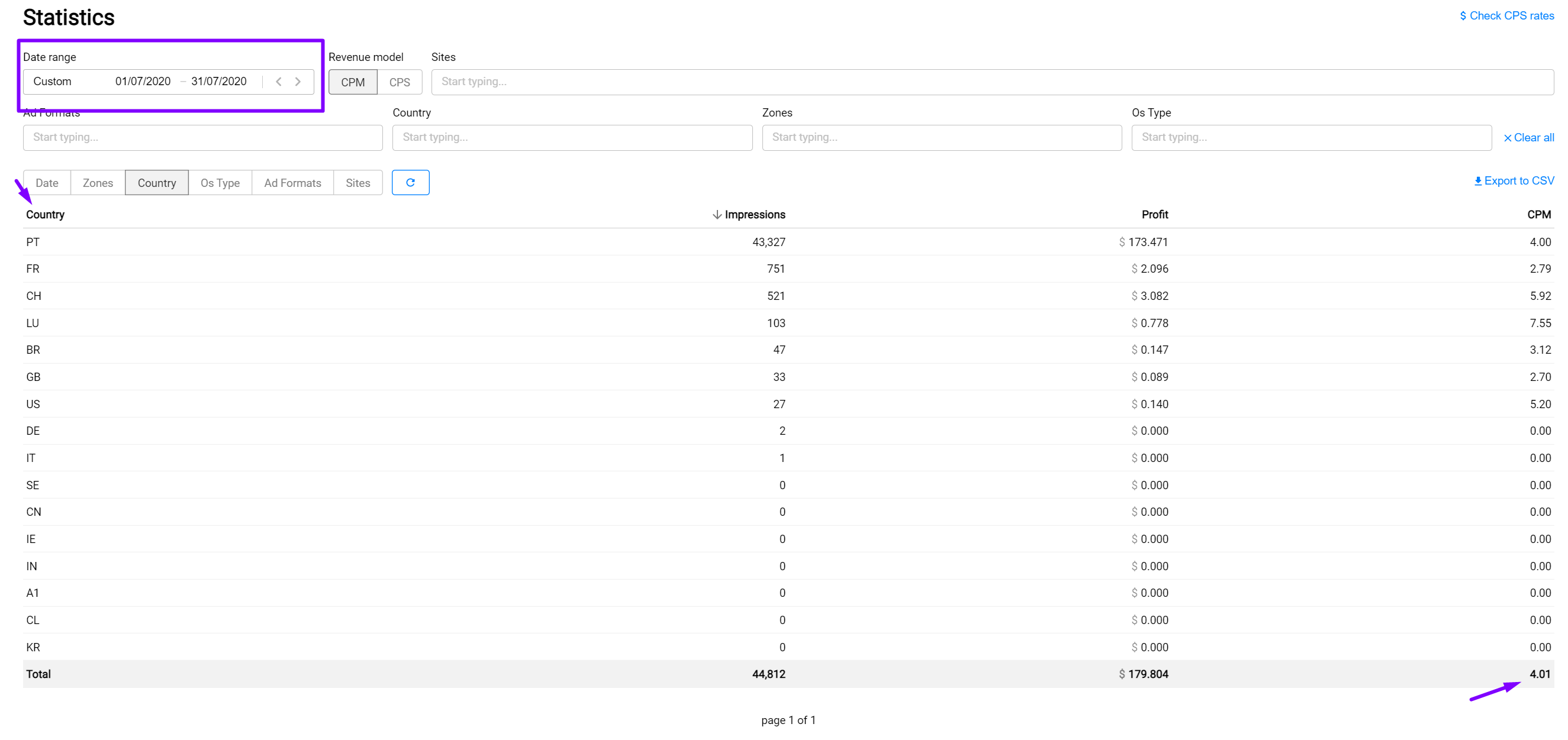
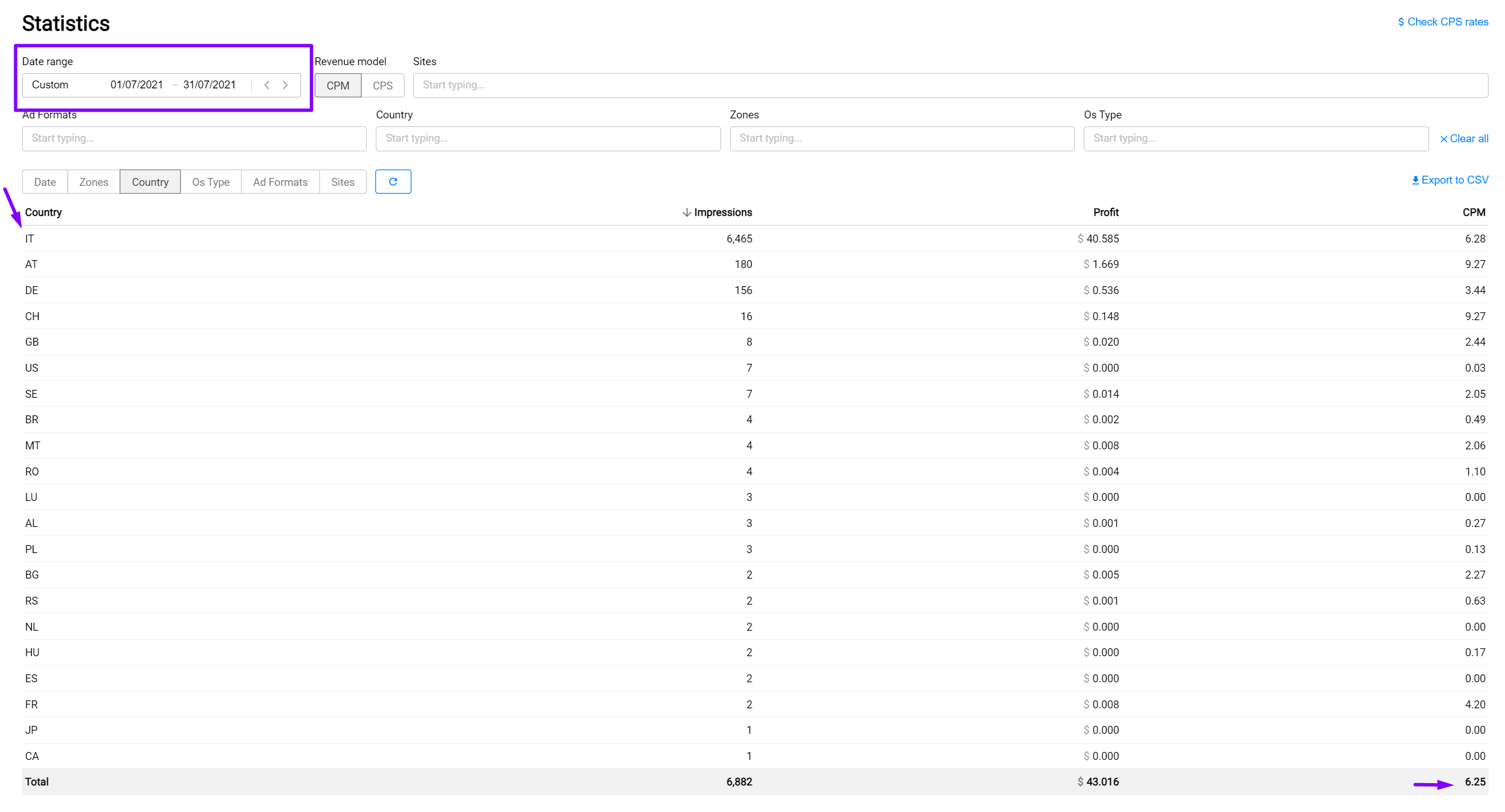
You can see how our publisher managed to increase his CPM by more than 50% of his previous year’s rate. What he did was simple: he changed the GEO traffic allocation, and from a $4.01 CPM he got a $6.25 CPM.
A very interesting fact is that using the filtering by GEO you can also identify which are the best paying countries for your kind of traffic specifically.
If you’re not sure how to set your traffic allocations, know that with our optimization system we make sure that you are only assigned the most profitable ads based on your unique traffic type. Yet, if your CPM seems to be lower, just give it a couple of days and it will most likely improve. But if you need more help, just ask your Publisher Partnership Manager.

#11. Advertisers can also cause your CPM to flicker
Oftentimes, advertisers can decide to cut campaign budgets, close them altogether, or redirect their finances towards the other ones that perform better. Or your traffic sources might suddenly not be that attractive for them. Whatever their personal reasons might be, this will cause your CPM to twitch.
We have a very good example from the beginning of the pandemic, when a lot of advertisers started closing their campaigns, because companies were severely affected. Since call centers were closed, advertisers couldn’t fully operate, having to close the campaigns related to sales, telemarketing, or surveys.
However, even during the darkest of times as one door closes, another opens. So, just make sure to use all the tactics that will keep your traffic up and running, and continue doing what you know to do best.
How should I monitor my CPM?
The first thing you need to do is carefully analyze your traffic. Whether you use SemRush, Ahrefs, or SimilarWeb, your results will pretty much be the same. However, a first step is applying the CPM formula:
CPM = 1000 * profit / impressions
As we saw before, each traffic slice is different, so your best shot is to filter them by:

| • Ad Format • Country • Site category | • Zone • OS Type |
These filters will help you see exactly where the drop or increase happened, allowing you to take some actions, as follows:
- CPM drop – take measures to avoid this happening again in the future
- CPM increase – push more traffic here to gain more money
Should I worry If I don’t get a high CPM?
This is something that a lot of Publishers worry about. But now you’ve got all the knowledge and means that you will need to fix any kind of CPM fluctuation.
If it needs fixing. You’re already on the right path, and you know you shouldn’t worry if your overall CPM is low. Take that deep breath, identify the issue, and fix it.
One simple technique to help you boost your CPM rate
If you’ve tried everything and nothing seems to work, then you might want to give our MultiTag a try. This versatile monetization format will allow you to optimize your ad delivery, by displaying all our 4 formats (Push Notification, In-Page Push, Interstitials, and OnClick Popunders). And all you need to do is just add one tag (not 4!!!) on your website.
And don’t worry, your users won’t be bombarded with all these formats at the same time. Instead, we’ll find the most optimal moments to show the ads, at the exact time when your viewers are most likely to engage with them.
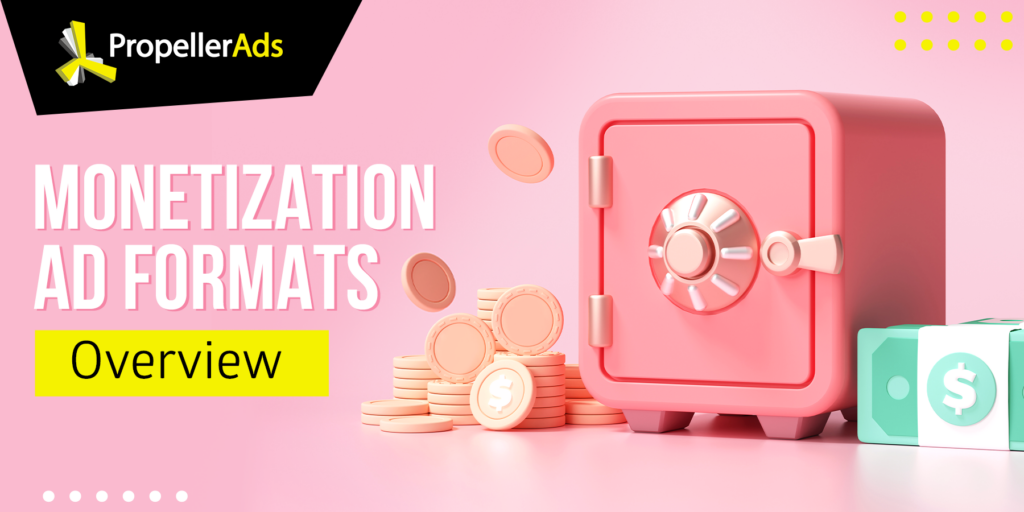
Are you in a pickle? Here’s what monetization formats you can use
Recap – What is a good CPM?
One very important thing that you need to remember, as a publisher, is that quantity doesn’t always equal quality. We’ve said it before, and we’re going to repeat it as much as it takes.
Although you’re getting a high CPM, this doesn’t necessarily mean that this is a good CPM. Or that you’ll have high profits. Advertisers often change their CPM bidding based on their campaign type, country, device, browser, and other variables.
For instance: An advertiser might be paying you $3 CPM for a campaign on dating. But you decide to exclude this category. Once you block this ad category, you will notice an obvious drop.
As long as your users don’t react to this type of campaign, you will do the right thing. Sure, your CPM will take the hit. Yet, the ugly truth is that you can’t define CPM rates as good or bad, based on various factors listed below:
| GEOs |
| Site niche/category – as we’ve already seen above. |
| Ad format and Ad Placement – users respond differently, and only a test can tell you more about what your users react to the most. |
| Various Campaign Categories – as a rule of thumb, the more ad campaigns you allow, the more you improve your profit chances. Just make sure not to spam your users. |
| The quality of your traffic – A lot of impressions don’t mean that you will get a good CPM. An anime website targeting 30+ might bring you a low engagement rate. And this will only lower your CPM rate. |
What you should get from this article
Good CPM varies from site to site. Your best chance is to monitor and analyze your traffic to see which are the best options for your site. And this is all coming from one of our experts and Senior Publisher Partnership Manager, Maro Chalntoupi.
So you know that we’ve not playing and only giving you real valuable insight.

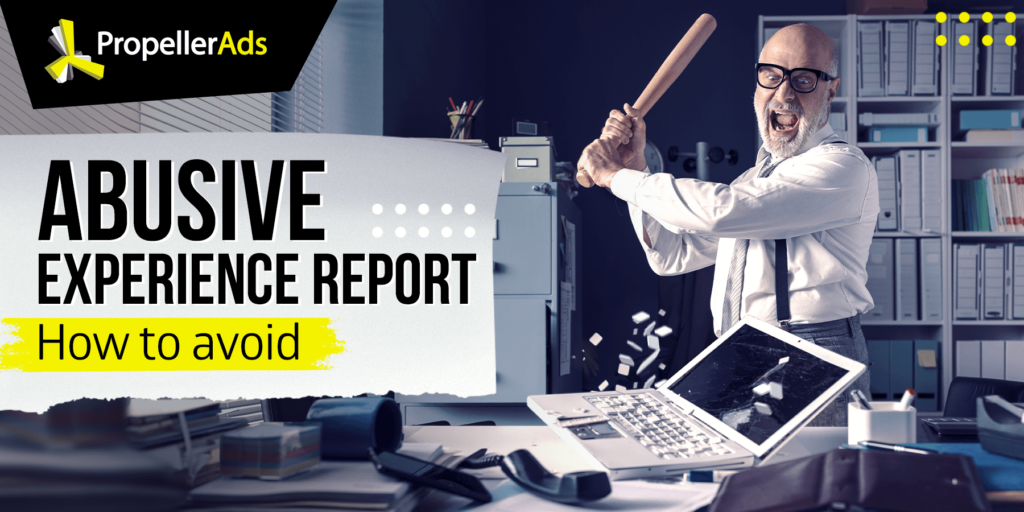

![New Monetization Format: Vignette Banners + [Case Study]](https://blogger.googleusercontent.com/img/a/AVvXsEi-7Oa839Ur8ylhI5oF2KAxV-78-8S3aG0AWjquZUwGDMXMVq_8d9En4NjvNuseFo_W14leJy3daMwJFErj7GT3T0CJw_gdK9pgVDaU9p7x2PhJxdeFdFn26GtAD6ljFVASlfxd2OuzdACL1-WVGRbqzXMFuTShTgtmPs_wIKEclZm35sirl_eSCqDE-A=w72-h72-p-k-no-nu)

No comments:
Post a Comment